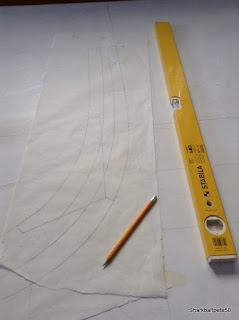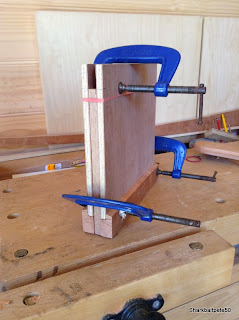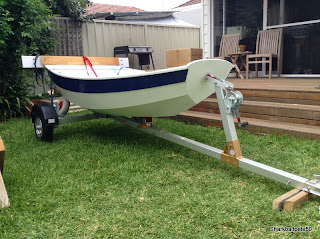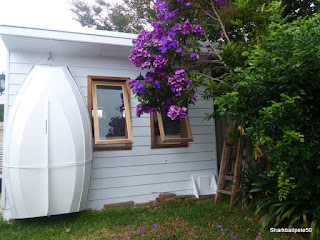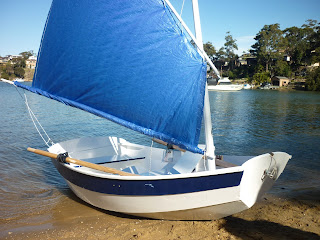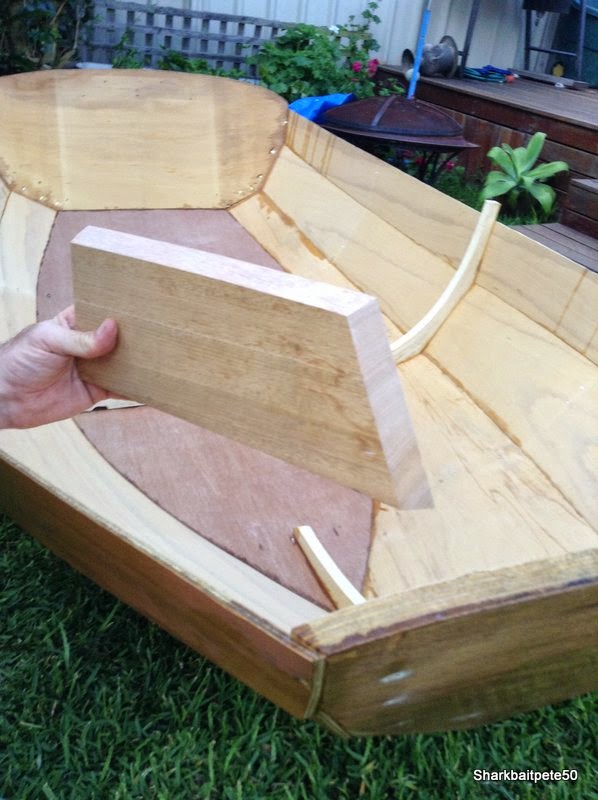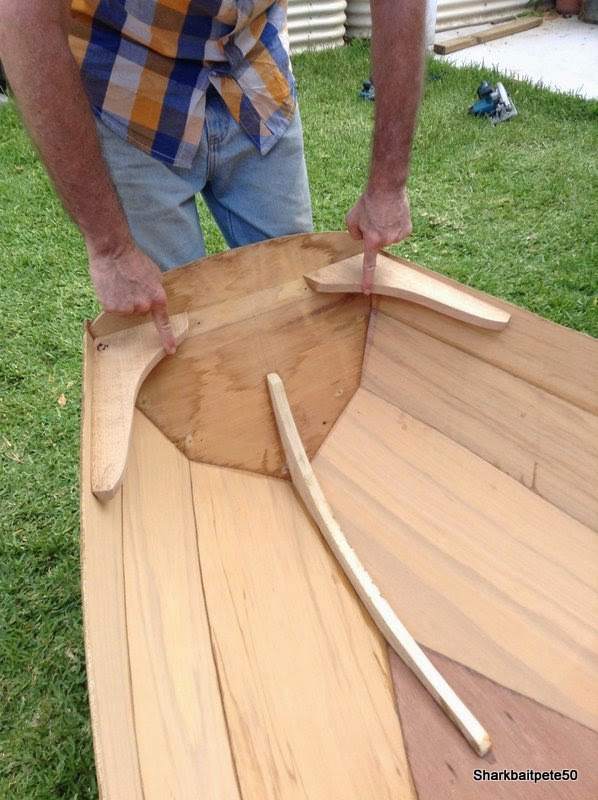Stem design and profile from Paul Gartsides #136 rowing boat
Lofting board laid on on the dining room floor, using the plastic lid off electrical trunking as a very flexible 'batten' to pick up the sharp curve of the stem.
Riff is drawn for a laminated stem, so I copied the details from Paul Gartside's design for #130 (a 12' rowing boat). One difference is that the rowing boat stem rises very quickly from a flat keel to a vertical prow. The Riff design is a more leisurely rise, perhaps better for changing tack when sailing.
Gartside design #146 for the Swansong sailing boat actually shows a laminated stem, so this is a fallback if I have trouble with the oak stem pieces.
I've bought a section of 100mm x 42 mm x 3600mm American Oak for the keel. this will need to be shaped slightly for the rise at the back of the boat (I'm assuming again to allow smooth changes of tack) and cut down to the dimensions required on the plans.
The stem design was drawn onto baking paper (works fine as tracing paper!)
Then the lines transferred to the oak blanks by pushing pins through the lines on the paper into the wood underneath.
The pinholes are then joined with a pencil - very accurate.
My cutting out of the (nearly 2" thick) oak was less then accurate (and strangley a long way from square) so some cleanup was required with a handplane (accomplished after some serious sharpening of a new blade). Oak is tough!
Placing two of the stem pieces together shows where the locking piece is yet to be shaped, and will be held with (silicon bronze) bolts.


